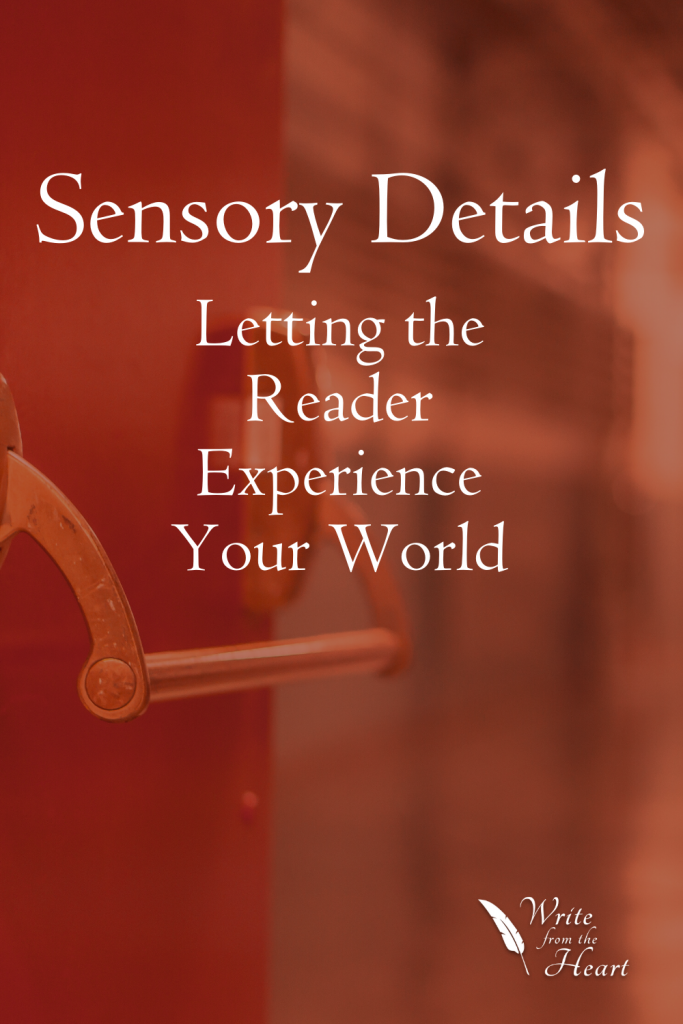
Sensory details make writing real.
Sensory details mark every moment of our lives. Have you ever been listening to the radio when a song came on that pulled you back to a particular moment of your life? Suddenly, you remember every detail of that time, memories flooding back, simply because you heard something you experienced during an important event. Listening to the radio, your brain made connections to a memory without conscious effort on your part.
You felt, simply from hearing.
You can do the same thing in your writing. You can make someone feel simply from the details that you choose. In fact, this is of the utmost importance, particularly in narrative writing. Leaving out sensory details can be like watching a movie and suddenly becoming very aware that there is no background noise in a scene—but there should be! We are a sensory species and crave that connection in all of our experiences; reading is no exception.
You already know your five senses: hearing, sight, smell, touch, and taste. When writing a narrative, your passage can seem bland without descriptive words and phrases. They’re the key to unlocking true communication between your work and the reader’s sensory response.

What are some strategies for including sensory details?
Aim for descriptive precision.
A clear, concise passage is more effective than rambling and being vague. Your thesaurus is your best friend as a writer, but never more so than when you’re choosing the perfect description. Why say two words when one will do?
- The man heard a loud, shrill caw coming from the rough, thick forest.
- The man heard a shrieking caw coming from the dense forest.
Remember to stay on topic.
Just as your descriptions need to be clear, so does your direction. Try not to lose focus when creating these engaging images and sensory details. Pull your reader in, but don’t ramble and lose them among all the doubly dew-kissed roses.
- Juliet wished she had eaten before she left for work. Her stomach was emptier than the desert, bleak and dry, without nourishment or water for miles on end, and longing for the rainy season.
- Juliet wished she had eaten before she left for work. Now her stomach was as empty as the Arabian desert. [The choice of “the Arabian desert” makes sense because it’s a desolate area, with nothing but sand for miles.]
Appeal to the senses in a way that the reader can relate to.
No matter what your topic, all your descriptions must be translated into something your reader can understand and feel through the same five senses. If you can master the art of appealing to all five and not overcrowding your work, you create a well-rounded conversation between the writing and the reader’s imagination.
- I could feel the rain. It dropped onto my arms and face. I breathed in a deep breath.
- The rain spattered coolly onto my arms and face, tapping the ground around me as I looked up at the gray clouds. I breathed in the stormy air along with all the wonderful scents it carried with it, like the soft, crushed pine needles and the sweet honeysuckle blossoms nearby.
Practice these tips before working on your next narrative. By including sensory details, you’re no longer talking to the reader; instead, you give the reader a chance to view the world from your eyes.
Want more help with bringing your writing to life? Register today for one of our Composition classes!


